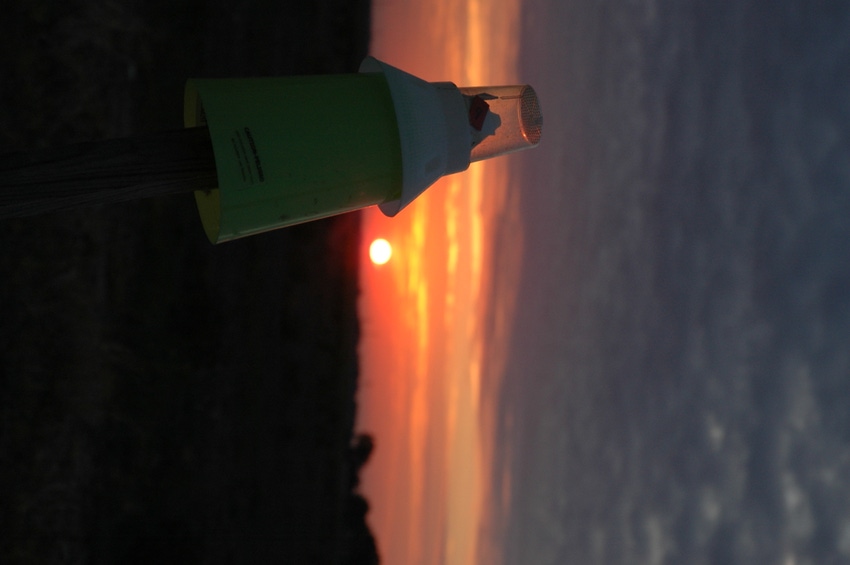
Late planted cotton, a cool spring and abundant September rains convinced the Texas Department of Agriculture's (TDA) to extend the cotton stalk destruction deadline for portions of some Coastal Bend counties.
TDA program specialist Dr. Robert Crocker acknowledged a request for extension had been received from the Chair of the Zone 2 CPAC. Crocker indicated that the Texas Boll Weevil Eradication Foundation (TBWEF) commented that in their opinion there was negligible risk in granting the request.
San Patricio County Extension crop specialist Bobby McCool reported on September 12 the TDA granted the blanket extension of the destruction deadline for Pest Management Zone 2, Area 3, which includes Aransas County except for that part north of Copano Bay, including but not limited to Lamar and Blackjack peninsulas, and San Patricio County south, and east of U.S. Highway 59 in Bee and Live Oak counties.
The area continues to receive substantial rain this week as a result of extensive Gulf moisture fueled by tropical weather systems. Over the last 30 days, the National Weather Service's Advanced Hydrologic Prediction Center indicates heavy rainfall amounts ranging between 4 to 9 inches have fallen across broad areas of the Upper Coastal Bend.
While cotton crop development has been slow in adjacent areas, and especially north stretching into Zone 3 (Areas 1, 2 and 3), officials say stalk destruction deadlines in those areas is later than for Zone 2. However, because of late planting and continued rain this month, a good chance exists that a request for extension may be forthcoming in those areas as well.
If you are enjoying reading this article, please check out Southwest Farm Press Daily and receive the latest news right to your inbox.
Zone 3, Area 2, includes Austin, Brazoria, and Fort Bend Counties and that portion of Wharton County east of the Colorado River. The standard deadline for cotton stalk destruction in Zone 3, Area 2, is October 15.
Zone 3, Area 3, includes Chambers, Colorado, Fayette, Galveston, Gonzales, Harris, Jefferson, Lavaca, Liberty, Orange, Waller, and Washington counties. The standard deadline for cotton stalk destruction in Zone 3, Area 3, is October 20.
In 2012, TDA announced stalk destruction extensions for Zone 3 for many of the same reasons. According to Texas Boll Weevil Eradication Foundation (TBWEF) guidelines, an extension may be requested for mitigating circumstances such as crop and subsequent harvest delays.
A bit of BWEP history
Officials say the TBWEF eradication program became necessary well over 100 years ago, but an organized program of eradication developed through the years. From 1917 until the late 1940s, the most effective method of control was the use of short-season, early maturing cotton varieties and dusting with calcium arsenate. During World War II, DDT and other chlorinated hydrocarbons were developed and made available to control many insect pests, including the boll weevil.
According to the TBWEF website, in 1955 scientists reported that boll weevils were becoming resistant to chlorinated hydrocarbons, and within two years resistance was widespread throughout the Cotton Belt. Concern was growing about the destruction of beneficial insect populations and the widespread occurrence of organochlorines in the environment.
Organochlorines were gradually abandoned in favor of organophosphate insecticides. Although the boll weevil has shown resistance to organophospates in Central America, it has yet to develop resistance in the United States, even in the Texas High Plains, where organophosphates have been used in an ongoing diapause program since 1964.
By the late 1980s, about $70 million was being spent annually to control the boll weevil, but the pest still caused an estimated $200 million in crop losses each year. Officials realized a new control strategy was imperative. Yield losses attributed to the boll weevil, the cost of insecticide control, environmental considerations, infestation of secondary insects and insect resistance all resulted in an aggressive effort to develop a Beltwide strategy for controlling the boll weevil in the United States.
Eradication programs were launched in the Southeast and by 1991 programs in the West were producing results as well. Only Texas remained of major concern. The Texas Boll Weevil Eradication Foundation was established by the Texas Legislature in 1993. The cotton-producer run, nonprofit foundation governs and oversees the implementation of the boll weevil eradication program in Texas.
While most areas of the state are weevil free, a quarantine zone along the Texas/Mexico border in the Rio Grande Valley remains in effect and stalk destruction programs are still required in an effort to maintain safeguards against re-infestation. USDA officials are now working with their counterparts in Mexico to bring about further eradication of the pest in North America.
Eradication officials say that cotton producers in coastal areas who cannot meet their respective destruction deadlines can request an individual extension by visiting the Texas Department of Agriculture Website at www.texasagriculture.gov/
Cotton articles also of interest:
Is South Texas buffer zone needed to prevent boll weevil reinfestation…
Boll weevil-free status must be guarded to prevent reinfestation
About the Author(s)
You May Also Like




